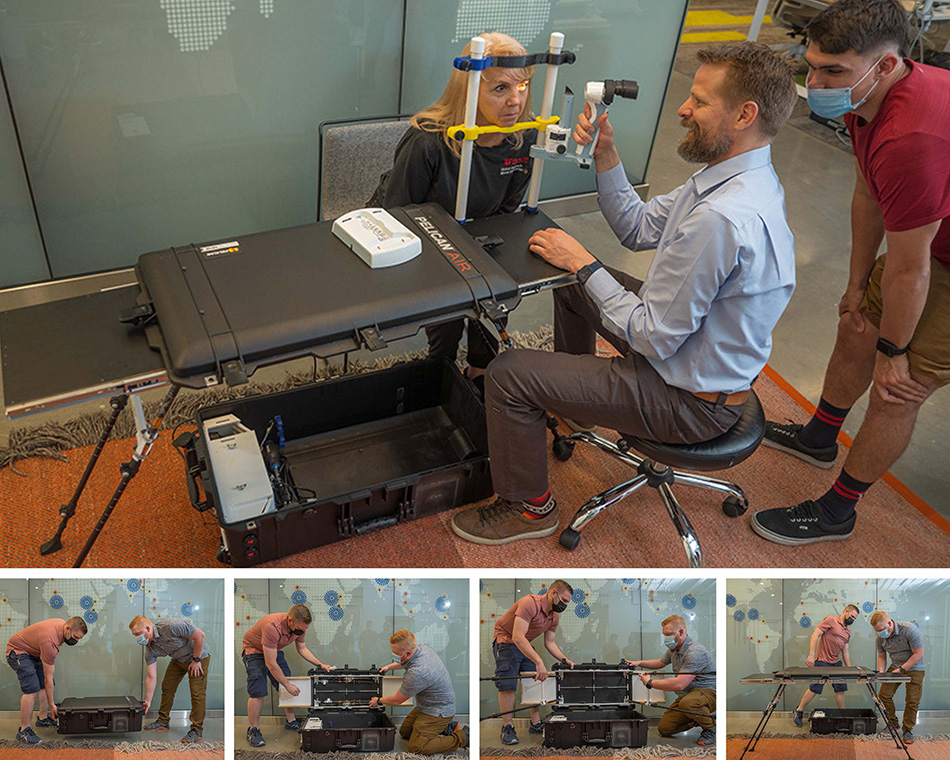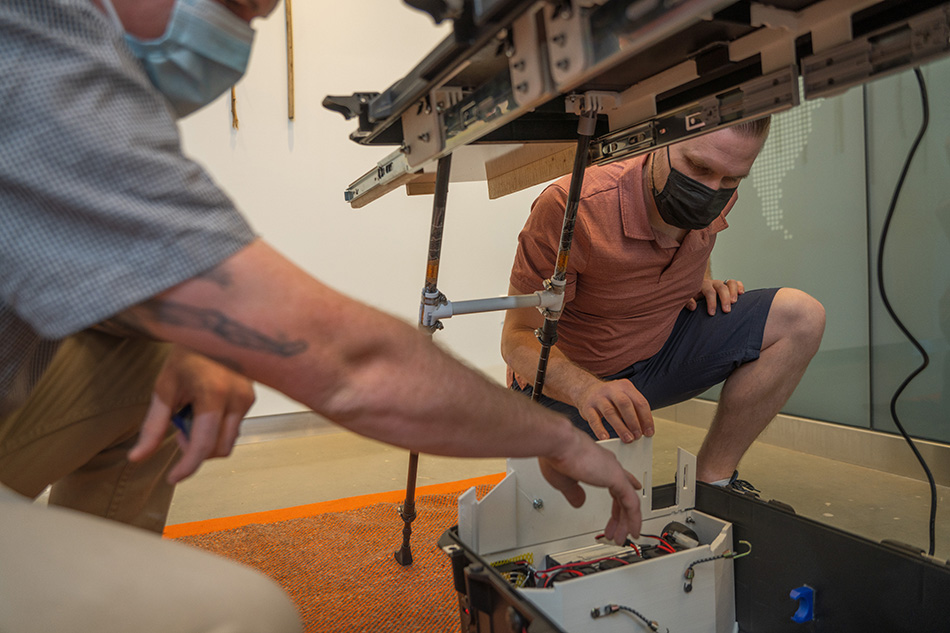
Performing comprehensive eye exams under challenging conditions—including a lack of power and reliable equipment in temperatures well over 100 degrees—is nothing new for the John A. Moran Eye Center’s Global Outreach team.
Whether on the far-flung islands of Micronesia or remote villages in sub-Saharan Africa where visual impairment runs high and resources can run low, Moran physicians and the local health care providers they’re training do their best with what is available.
One of many physicians who experienced those situations firsthand was the late Alan S. Crandall, MD, the founder and senior medical director of Moran’s Global Outreach Division. Shortly before he passed away in October 2020, Crandall’s decades of global humanitarian work and his love of mechanics and innovation served as the inspiration for a collaboration with the University of Utah’s Department of Mechanical Engineering’s Capstone Design Program. The senior-level design program is a two-semester sequence in which engineering students demonstrate that they can integrate everything they have learned into a deliverable product.

Meeting a Basic Need in Outreach Care
Often, what’s missing in low-resource ophthalmic outreach situations is basic: a sturdy flat table, a frame to support patients’ heads and keep them stationary during eye examinations, and charging options for a portable electronic slit lamp. One of the key components of a comprehensive exam, the lamp is a microscope with a bright light that gives a detailed view of the front and back of the eye. It is a vital tool in determining eye health and detecting eye disease.
With input from Crandall and Moran’s outreach team, a group of fourth-year mechanical engineering students led by Mechanical Engineering Professor Kenneth d’Entremont, PhD, PE, conceived and created a portable solution that addresses all those needs. And it fits into one neat package—a Pelican Air 1615 case. The students presented their resulting "Field Equipment for Eye Examinations" (watch the video) during Design Day 2021.
"One goal we have as engineers is to find and create solutions that have a positive effect on humanity. Dr. Crandall and the outreach program gave us a platform that allowed us to link that goal with something real. The inspiration for the case came from observing some of the struggles the team faced. Knowing it could potentially lessen some of those burdens kept us motivated to see it through."
Jamie Hughes, fourth-year mechanical engineering student
The "Field Equipment for Eye Examinations" project includes:
- Sturdy, 3D-printed head support that holds up to 10 pounds and easily attaches to multiple surfaces.
- Worktable with slide-out tables on both sides to create a larger workspace. The team used collapsible trekking poles as table legs, allowing users to adjust the table height.
- Power bank to charge the portable slit lamp. Three lithium-polymer batteries provide a total of 444 watt-hours of battery capacity, enough to charge all of Moran’s commonly used equipment at least once during a workday.

"I’m most proud of the battery bank and charging capabilities of the case," said student Jamie Hughes. "There are plenty of backup battery storage devices on the market similar to what we have, but I have yet to see one with removable batteries like ours. This capability means they can take the case on an airplane. Otherwise, the combined battery capacity would be too large, and airlines wouldn’t allow it."

The design team described their solution as "robust, versatile, functional, and easily maneuverable."
"I would agree with that description," said Global Outreach Division Co-Medical Director Jeff Pettey, MD, MBA. "Everything about this invention makes it a great fit for any international trip. The battery bank alone is impressive, as it includes a cooling system that can survive in temperatures well over 100 degrees."
Moran physicians and medical personnel have volunteered their time in more than 20 countries as part of the donor-funded division’s mission to create sustainable eye care systems worldwide.
In Utah, teams provide care on the remote Navajo Nation, in community clinics, and to underserved populations, including people experiencing homelessness, refugees, spinal cord injury patients, and the uninsured. In developing nations, surgeons perform hundreds of cataract surgeries at high-volume clinics that alleviate a backlog of blindness while training local doctors and nurses to continue working and teaching others.
Friendship Spurred Cross-Campus Collaboration
"My connection with Dr. Crandall goes back decades by way of my wife, who was familiar with his outreach work around the world," said d’Entremont. "When I needed cataract surgery about four years ago, she made sure I went to see Dr. Crandall and, as happened with so many people who were welcomed into his fold, we became great friends."
Shortly after his cataract surgery, d’Entremont began seeking projects and sponsors for the Capstone Design Program. Moran’s Global Outreach Division seemed like the perfect fit.
"Alan never had a shortage of ideas," said d’Entremont. "So we began work on a power-supply/worktop/support platform. The students met with Dr. Crandall, and some also traveled with the program to the Navajo Nation to experience the work firsthand. It’s been a great collaboration for a worthy mission, saving sight for people in need."